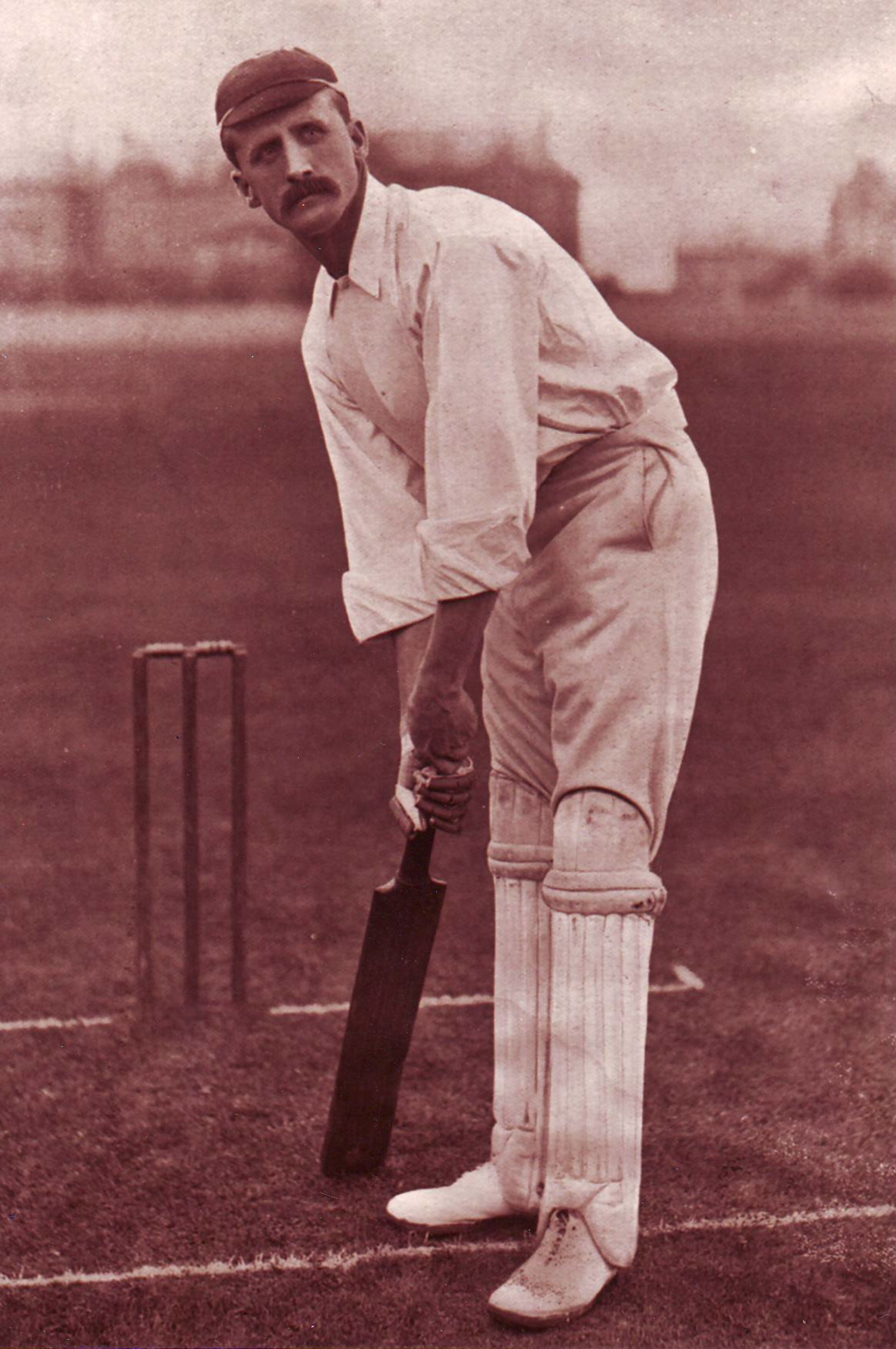There was a large gathering of dignitaries when Sir Stanley Jackson, the England and Yorkshire cricketer, performed the official opening ceremony of the J A Dixon Memorial Gates at Trent Bridge on 2 May 1933. The Memorial Gates had been paid for by public subscription and erected in recognition of John Auger Dixon’s fifty year association with Trent Bridge.
Dixon made his debut for Nottinghamshire in August 1883 and was actively involved with the County Club up to the time of his death, however he struggled through the 1880s to gain a regular place in the County XI and his first claim to fame was on the football field.
Making his first appearance for Notts County in September 1883, he performed so well as an inside forward that in 1885 he was capped by England against Wales at Leamington Road, the former home ground of Blackburn Rovers. An injury ended his football career in 1888 and it was then that his cricketing career really blossomed.
In 1889 he was appointed Notts captain and although he failed to become a double international, he was picked regularly for the major domestic match of the season – Gentlemen v Players – and in 1897 was invited to tour Australia with the England team but had to decline the offer for business reasons. 1897 had been his best summer with the bat and his innings of 268* against Sussex at Trent Bridge that year was at the time the highest individual score for the County.
He stood down as Notts captain after the 1899 season but played occasional First-Class matches for the side until 1905. On the administrative side of the game, Dixon was elected to the Notts CCC Committee in 1895 and in 1910 was made a life member of the Committee, an honour only bestowed on one other person in the history of the Club. His main role on the Committee was that of Chairman of the Club & Ground sub-committee and he usually had the final say in the engagement of new players and, indeed, the sacking of old ones.
Dixon was Nottinghamshire’s permanent representative on the Advisory County Cricket Committee at Lord’s and the first Notts man to be chosen as a Test selector. As a business man, he was Chairman of the well-known Nottingham firm, Dixon & Parker Ltd, manufacturing clothiers. The firm continued to flourish long after his death. Born in Grantham in 1861, he was educated at Nottingham High School where he captained the cricket team in 1876. He died after a month’s illness on 8 June 1931 and was buried in the Rock Cemetery in Nottingham, where a memorial stands, which also marks the grave of his wife, who died as recently as July 1975.
December 2020
Nottinghamshire First-Class Number: 179
See John A Dixon's career stats here
One of John Auger Dixon's bats is on display in the Long Room; Bat No 54
